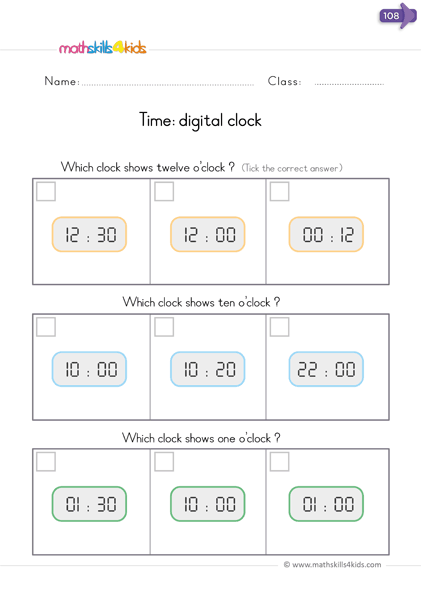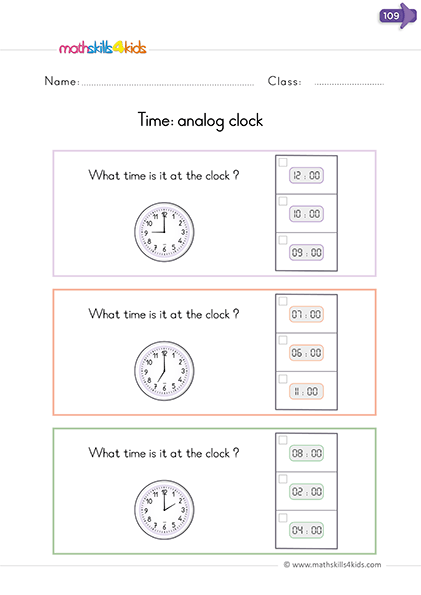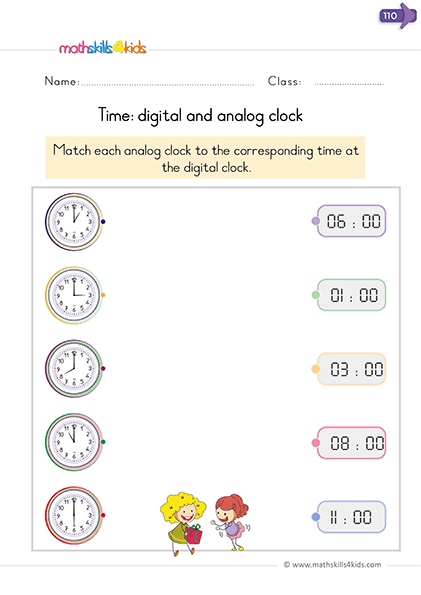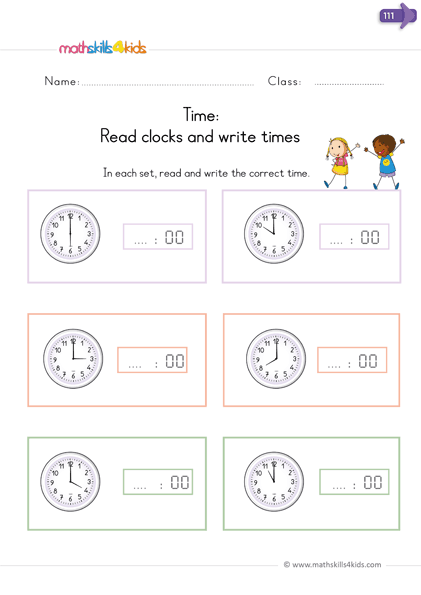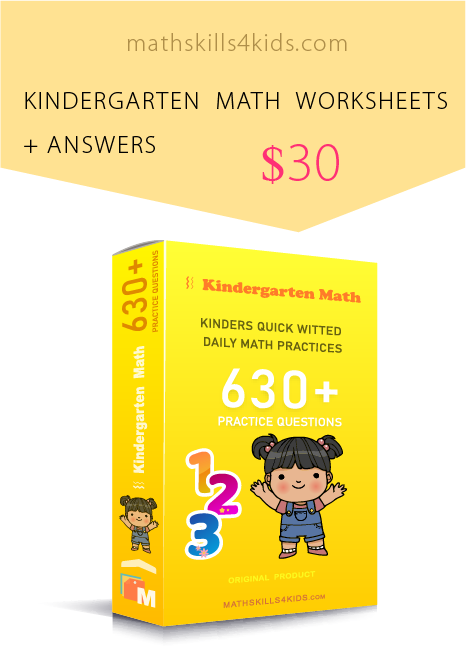Telling time made easy: worksheets for kindergarten kids
Hello, parents and teachers! Are you interested in simple worksheets that will help your kindergarten kids learn how to tell time in a fun and easy way? If so, you are in the right place!
We have made this telling time worksheet very easy for kindergarten kids to understand as it includes many other math skills besides just time telling.
However, this resource will share some fantastic worksheets that will teach your kids everything they need to know about telling time.
-
These worksheets are designed to be engaging, interactive, and colorful, so your kids will enjoy learning and practicing their time skills. Let's get started!
Introduction: why learning to tell time is important for kindergarten kids
Learning to tell time is an essential skill for kindergarten kids.
It helps them develop their number sense, spatial awareness, and logical thinking. It also prepares them for more advanced math concepts like fractions, decimals, and geometry.
Moreover, learning to tell time helps kids to have a better understanding of the world around them. They can relate to the natural cycles of day and night, seasons, and weather.
They can also organize their daily routines, follow schedules, and plan future events. Learning to tell time is not only helpful but also fun!
-
BROWSE THE WEBSITE
-
DOWNLOAD FREE WORKSHEETS
-
-
K- MATH TOPICS
- Learn to count up to 3
- Counting from 1 to 5
- Count up to 10
- Learn to count up to 20
- Counting to 100
- Skip counting
- Measurement
- Sum and difference
- Comparison
- Patterns
- Addition up to 5
- Addition up to 10
- Subtraction up to 5
- Subtraction up to 10
- 2D shapes
- Introduction to symmetry
- Position
- Fractions
- Time
- Classify
- Data and graph
- Probability
- 3D shapes
-
-
The Parts of a Clock and How They Work
The first step to learning how to tell time is understanding the parts of a clock and how they work.
A clock is a device that shows the time by using a face, a dial, or a display. The most common type of clock is an analog clock, which has a round face with numbers from 1 to 12 and two or three hands that point to the numbers.
The long hand, called the minute hand, shows the minutes. The short hand is called the hour hand, and it shows the hours. Some analog clocks also have a third hand called the second hand that shows the seconds. The hands move around the clock face in a clockwise direction, from left to right.
To help your kids learn the parts of an analog clock and how they work, you can use this worksheet with a picture of a clock and labels for each part.
You can also use this worksheet that has a blank clock face and hands that your kids can cut out and glue on the clock. You can then ask your kids to move the clock’s hands to show different times and explain what each hand means.
-
Reading the hour and minute hands on an analog clock
The next step to learning how to tell time is to read the hour and minute hands on an analog clock.
To read the hour hand, you must determine which number it is pointing to or near. For example, if the hour hand is pointing to or near 3, it means it is 3 o'clock or close to 3 o'clock.
To read the minute hand, you must count how many minutes it has passed from 12 o'clock. Each number on the clock face represents 5 minutes, so you can use multiples of 5 to count the minutes.
For example, if the minute hand is pointing to or near 6, it means it has passed 30 minutes from 12 o'clock.
To help your kids learn how to read the hour and minute hands on an analog clock, you can use this worksheet with pictures of different clocks and ask your kids to write down what time they show.
You can also use this worksheet with blank clocks and ask your kids to draw the clock’s hands to show different times.
-
Comparing analog and digital clocks
We have another type called the digital clock beside the analog clock. We will therefore offer straightforward time-telling drills that will enable kindergarten kids to learn and compare analog and digital clocks.
The digital clock is very common nowadays. It displays time using numbers. These numbers usually show the hours and minutes separated by a colon (:), and sometimes the seconds after another colon (:).
For example, a digital clock might show 3:15 or 3:15:27.
A digital clock can also show whether it is AM or PM using letters after the numbers. AM stands for ante meridiem, which means before noon in Latin, and PM stands for post meridiem, which means afternoon in Latin.
For example, a digital clock might show 3:15 PM or 15:15.
To help your kids learn how to compare analog and digital clocks, you can use this worksheet from Mathskills4kids that has pictures of both types of clocks and asks your kids to match them with the same time.
You can also use this worksheet with pictures of analog clocks and ask your kids to write down what time they show in digital format.
-
Using time words like morning, afternoon, and evening
Another way to tell time is to use time words like morning, afternoon, evening, and night. These words describe different parts of the day based on the sun’s position in the sky.
- The morning is when the sun rises, and it is bright outside.
- The afternoon is when the sun is high in the sky and warm outside.
- The evening is when the sun sets, and it gets dark outside.
- The night is when the sun is gone, and dark outside.
To help your kids learn how to use time words like morning, afternoon, and evening, you can use this worksheet with pictures of different activities and asks them to circle which part of the day they usually happen in.
You can also use this worksheet with sentences with missing time words and ask your kids to fill in the blanks with the correct words.
-
Estimating and measuring time with different units
Another skill related to telling time is estimating and measuring time with different units. Time can be measured using units like seconds, minutes, hours, days, weeks, months, years, etc.
Each unit represents a different amount of time that passes or lasts.
For example,
a second is very short,
a minute is longer than a second,
an hour is longer than a minute,
a day is longer than an hour,
a week is longer than a day,
a month is longer than a week,
and a year is longer than a month.To help your kids learn how to estimate and measure time with different units, you can use this worksheet with pictures of different objects and asks them to estimate how long they take to do something with them.
For example , how long does brushing your teeth with a toothbrush take?
You can also use this worksheet with pictures of different clocks and ask your kids to measure how much time has passed between two times.
For example,
how much time has passed from 9:00 AM to 10:30 AM?
-
Scheduling and planning activities with time
Another skill related to telling time is scheduling and planning activities with time.
Scheduling means arranging activities in a particular order or sequence based on when they happen or need to happen.
Planning means deciding what activities to do or not do based on how much time they take or need.
Scheduling and planning activities with time help kids manage their time better, be more organized, and achieve their goals.
To help your kids learn how to schedule and plan activities with time, you can use this worksheet with pictures of different activities and asks them to put them in order from earliest to latest.
You can also use this worksheet that has pictures of different activities and asks your kids to choose which ones they would do or not do based on how much time they have.
-
Review: what you have learned about telling time
Congratulations!
You have learned so much about telling time!
Let's review what you have learned:
- You have learned the parts of an analog clock and how they work.
- You have learned how to read the hour and minute hands on an analog clock.
- You have learned how to compare analog and digital clocks.
- You have learned how to use time words like morning, afternoon, evening, and night.
- You have learned how to estimate and measure time with different units.
- You have learned how to schedule and plan activities with time.
You should be proud of yourself!
You are now ready for more challenges!
-
Bonus: Fun and easy time games and crafts for kindergarten kids
If you want more fun and easy ways to practice telling time, you can try these games and crafts that are perfect for kindergarten kids:
- Make your own paper plate clock with cardboard numbers and paper hands to move around.
- Play "What's The Time Mr. Wolf?" with your friends where one person is the wolf and says a time, and the others have to move closer or run away depending on what he says.
- Make a daily schedule chart with pictures of your routine activities and stick them on a board with magnets or velcro.
- Play "Time Bingo" with cards with pictures of clocks showing different times, and try to match them with your bingo card.
- Make a sundial with a stick and some rocks and see how it changes position as the sun moves across the sky.
Fun o’clock telling time exercises for kids –best strategy for programming daily activities
The fun o’clock telling time exercises for kids in our time clock worksheet for kindergarten are amazing tools that will uplift your kid’s conscious minds. Also, achieving an organized and successful future begins from knowing how to manage time right from an early age.
For this reason, knowing how to tell time is for sure of vital importance young learners. An amazing thing here is that kids will automatically regard the time telling concept as best strategy for programming their daily activities.
For instance, they will know exactly when to leave for school, eat snacks, paly, have siesta and many other activities.
The digital clock has a very simple technique to master the “o’clock of time”. Kids simply need to be able to identify figures 1 to 12. As such, they can easily tell if it’s 1 o’clock, 2 o’clock, 3 o’clock 4 o’clock right up to 12 o’clock.
The time read for example 9 o’clock can be represented in an analogue clock as such → 9:00.
This is so simple. Isn’t it?
9 : 00
The first figure, 9 simply names the hour, while 00 names the minute.
Example: in each case, read and write the correct time
Hey! Kids, let’s take a look at the analogue clock. I bet you, it’s very simple to read and write its time. Just take a look at the two arrow pointed hands on the clock. Hope you’ll see that one is short, while the other one is long. For an easy understanding, just follow the tips below;
- The short hand is the hour hand, while the long hand is the minute hand
- The long hand must point to 12, before it can be read o’clock.
- The short hand, which is also the hour hand points to any number following the hour of the day
- Now, if at the same moment for example the short hand is pointing to 6 while the long hand is pointing at 12, then the time can be written 6 : 00 and read 6 o’clock.
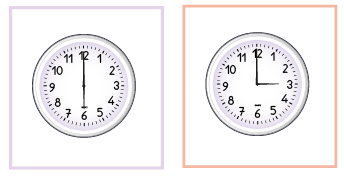
From the exercise in each case, read and write the correct time, we’ll simply follow the tips above.
In the second clock, the short hand is at 3, while the long hand is at 12. We will name only the hour “3” and NOT 12. So the time can be read 3 o’clock, and written 3:00.
-
Thank you for sharing the links of MathSkills4Kids.com with your loved ones. Your choice is greatly appreciated.
We hope you enjoyed these games and crafts!
Happy Learning!
Useful links
Learning to Tell Time | math-aids.com:
https://www.math-aids.com/Time/
Tell Time Printable PDF for Kindergarten | kidsacademy.mobi:
https://www.kidsacademy.mobi/printable-worksheets/kindergarten/math/time/
